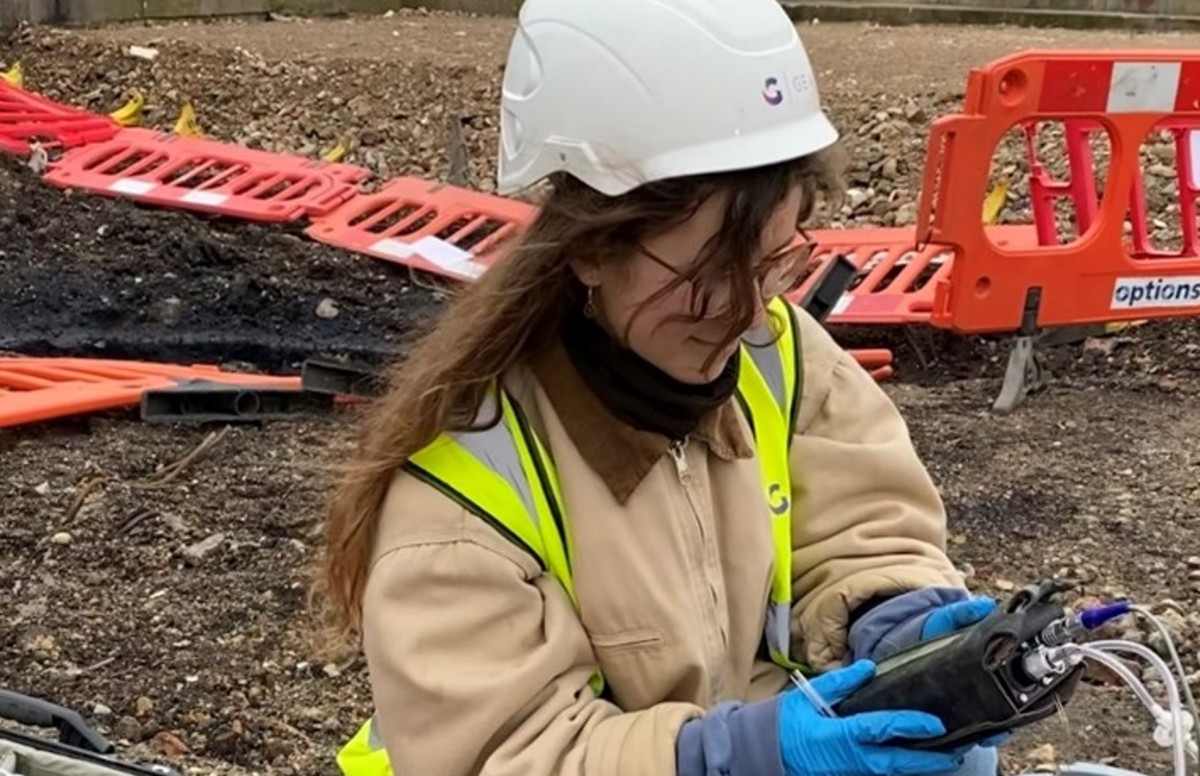More About Geotheta
More About Geotheta
Blog Article
The Geotheta PDFs
Table of ContentsRumored Buzz on GeothetaIndicators on Geotheta You Should KnowThe 7-Second Trick For GeothetaThe smart Trick of Geotheta That Nobody is Talking About
They work together with civil designers, architectural engineers, architects, and various other specialists to integrate geotechnical factors to consider into the total job design and building process. This calls for reliable synergy, control, and interaction to guarantee that the geotechnical aspects line up with the project objectives and fulfill regulatory needs.Mining & Products Design: Concepts of boring, infiltration rates, and elements influencing the option of boring approach. Characteristics of dynamites, firing systems and blast patterns. Blowing up methods in surface area and below ground operations. Special blasting strategies at excavation perimeters. Resonance and noise control. Mechanical and continuous approaches to fragmentation, including longwall shearing and fullface boring.
Integrated analysis of fragmentation and comminution operations. Supplied by: Mining & Materials Design.
6 Easy Facts About Geotheta Described
Bachelor's level programs in civil, geotechnical, geological, and ecological design commonly last 4 years and include general education courses in English, social scientific research, and the humanities, as well as training courses in advanced mathematics, architectural geology, and fluid mineralogy. (https://www.avitop.com/cs/members/geotheta.aspx)
Geotechnical design entails the analysis of the soil and rock problems at a certain site, and their implications for the advancement of that website. As the majority of structures depend on the ground for support, it lacks shock that a detailed understanding of the ground problems, and the viability of foundation systems, are vital to the long-term security and efficiency of the structure or structure.
Being experts in the investigation of geological developments and ground behaviour, geotechnical designers execute scientific examinations and testing to understand the effect these geological formations may carry the style and construction of building, civil and framework tasks. This proficiency is crucial for the design and construction of buildings, roads, passages, dams, bridges, and supply of water and sewer system.
The geotechnical group at Douglas Allies consistently consult with designers, layout designers, designers, and builders to make recommendations on design and advancement propositions to guarantee that the developed structures are suitably designed for the ground problems. The layout of footing systems requires to think about the weight of the structure, the ability of the ground to support that weight with each other with movement tolerances and effective construction.
Not known Details About Geotheta
This job is considerably simplified by the usage of our Douglas Map geospatial platform that makes this information easily available in a very easy to use internet internet browser interface. A geotechnical designer will route the drilling of boreholes and test pits to accumulate dirt and other examples, and likewise assess surface features and ground exposures to create a geotechnical model of the subsurface conditions.
Depending on the task type and ground conditions ran into, lab screening may to name a few things analyze strength, compressibility, reactivity and/or leaks in the structure of dirt and rock examples. After this information is collected and collated, the results are used for a geotechnical model of the website, which is generally offered as sections throughout the website.

A geotechnical investigation by nature can only examine the ground problems at the areas drilled or dug deep into. Natural variants in dirt and rock conditions can happen throughout a site and between test areas. It is consequently great technique that the geotechnical engineer be retained throughout construction of the task to supply on-site confirmation that the ground problems experienced follow the assumptions and advice given in the geotechnical examination record.
The Ultimate Guide To Geotheta
Geotechnical engineers utilize their extensive expertise of dirt and rock to evaluate risk and solve issues on varied framework projectsGeotechnical design is a specialist branch of civil design which looks at the practices of earth materials and the application of soil and rock auto mechanics. Tailings Engineer. As a geotechnical engineer, you will certainly assess the physical, mechanical and chemical residential or commercial properties of dirt and rock in order to create foundations, preserving frameworks and earthworks
Geotechnical engineering is carefully connected to and overlaps with, both engineering geology and ground engineering - https://www.4shared.com/u/w_sNL5Rc/ianhammond2191.html. It's feasible to specialise in geotechnics or help a geotechnical firm yet be recognized as a design geologist or a ground engineer. As a geotechnical designer, you'll require to: construct and preserve partnerships with clients and various other experts associated with the website, throughout each projectmaintain security standards on site bear in mind price ramifications when you make recommendationsstudy geological maps and aerial photographs from a series of sources and from different time periodsexamine building plans to see exactly how practical they are based upon your understanding of the siteinvestigate dangers or geological threats for the sitesearch for eco delicate features, such as garbage dump beginning to establish factual and interpretive ground modelsplan field investigationsdrill and evaluate examples of bedrock, soil, groundwater and added materials manage various other experts on sitesolve technological problems as they emerge, such as unexpected frameworks at drill sitesmonitor conditions throughout and after building to see to it structures are secure in the short and lengthy termadding data collected on site to your initial researchcreating geotechnical estimations, illustrations, and two or three-dimensional computer system designs translating the datamaking recommendations about the suggested use of the website

Report this page